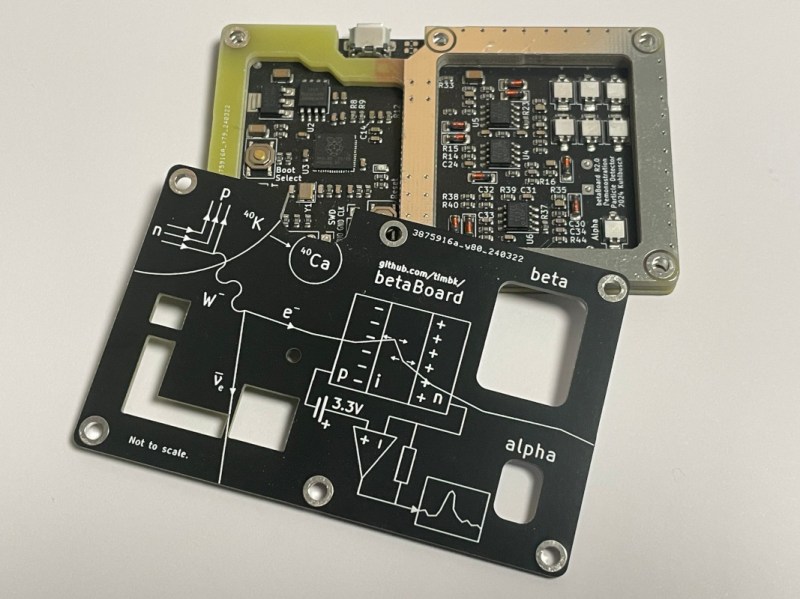Experimenting in the world of particle physics probably brings to mind large, expensive pieces of equipment like particle accelerators, or at least exotic elements or isotopes that most of us can’t easily find. But plenty of common objects emit various particles, and it turns out that detecting these particles does not require government backing or acres of test equipment. In fact, you can get this job done with a few readily-available parts and [Tim] shows us how it’s done with his latest project.
The goal of his build is to have a working particle detector for less than $10 per board, although he’s making them in bulk to be used in an educational setting. The board uses a set of photodiodes enclosed in a protective PCB sandwich to detect beta particles from a Potassium-40 source. The high-energy electron interacts with the semiconductor in the photodiode and creates a measurable voltage pulse, which can be detected and recorded by the microcontroller on the board. For this build an RP2040 chip is being used, with a number of layers of amplification between it and the photodetector array used to get signals that the microcontroller can read.
Getting particle physics equipment into the hands of citizen scientists is becoming a lot more common thanks to builds like this which leverage the quirks of semiconductors to do something slightly outside their normal use case, and of course the people building them releasing their projects’ documentation on GitHub. We’ve also seen an interesting muon detector with a price tag of around $100 and an alpha particle detector which uses a copper wire with a high voltage to do its work.
















“Experimenting in the world of particle physics probably brings to mind large, expensive pieces of equipment like particle accelerators, or at least exotic elements or isotopes that most of us can’t easily find.”
Well there’s always accelerator on a chip.
https://phys.org/news/2020-01-particle-chip.html
Accelerate it to 94% the site of light in 1 inch of chip, detect and record the outcome within 1 football field of tech! 🤔
Oh that’s awesome. Great source too.
For those that don’t know, the Institute Of Physics also provide free physics advice for projects such as games, movies and of course, projects for citizen scientists.
LHC Pocket Edition?!
Great. Now someone’s going to reproduce CERN at home and open ANOTHER portal to Hell.
I’d buy one in a heart beat. I hope that they become commercially available for both schools and private individuals via Crowd Supply or similar.
It is cool, a safe particle detector for kids. Most of us have 2 or 3 particle detectors in the house AKA smoke detectors but, except for the piercing tone, not really made to interface with and not so safe to open up, considering that many contain radioactive Americium